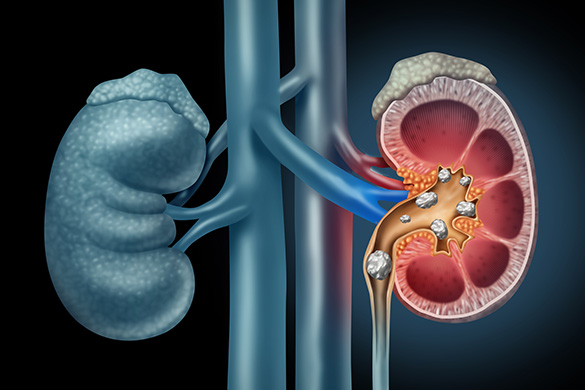Kidney Stones Are on the Rise: Are You at Risk?

Just the thought of kidney stones can make a person wince in pain — especially if you’ve experienced one of these tiny nightmares yourself.
“Approximately eight in 1,000 people will experience a kidney stone every year, which is a 50% increase in occurrence since 2010,” said Rosa Avendano, MD, Avera Medical Group family practitioner.
This might appear to be a small risk, but don’t kid yourself — kidney stones are on the rise among men and women ages 40 to 60.
What Causes Kidney Stones?
Kidney stones form when excess elements in the blood, typically calcium, filter into the kidneys and build up.
“For the most part, an unhealthy lifestyle contributes to the formation of kidney stones,” said Avendano.
Some reasons include:
- Low fluid intake/dehydration
- Long sun exposure, especially combined with poor hydration
- High protein intake, particularly red meat
- High carbohydrate intake, especially processed carbs
- Certain medications and supplements, such as excess vitamin D
- Metabolic disorders including gout or hyperparathyroidism
- An overall poor diet, especially one that adds to existing obesity
How Can I Prevent Kidney Stones?
“Kidney stones are typically related to a diet that neglects whole foods,” said Avendano. “Be mindful of the amount of protein and simple carbs you are eating. Eat to reduce your waistline and risk of obesity, and avoid dehydration.”
What Are Symptoms of Kidney Stones?
The most obvious symptom is severe abdominal pain which can radiate into the groins and inner thighs. Most people develop nausea and vomiting. In addition, because there’s an obstruction in the kidney, there’s an increased risk of urine infection.
Where Do I Go If I’m Experiencing Pain from a Kidney Stone?
Avendano advises you to go straight to the emergency room.
“You might be experiencing a number of symptoms including abdominal pain and fever, so the ER is the best option,” said Avendano. “You may undergo a CT scan to get to the root cause of your intense abdominal pain.”
How Are Kidney Stones Treated?
The CT scan in the ER will not only conclude if what you’re experiencing is indeed a kidney stone, but will also gauge the size. Size will determine your course of treatment.
Small kidney stones, a few millimeters wide, only need water and medication called Flomax to increase kidney movement and flush the stone out.
“Larger kidney stones need more intervention and the expertise from a urology specialist,” said Avendano.
The urologist will perform a procedure called lithotripsy which uses ultrasound waves to break large kidney stones into smaller, passable pieces. Or, a surgically implanted stent is another treatment method that opens the kidney tubes to allow urine and obstructions to pass through.
It varies from person to person as for the length of time until the stone is eliminated.
Visit with your primary care provider to learn more about how you can manage your lifestyle to prevent kidney stones. Download our Healthy Weight booklet to get started today.


